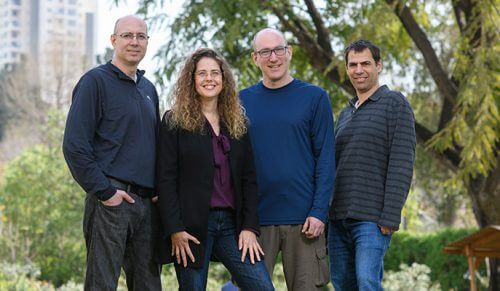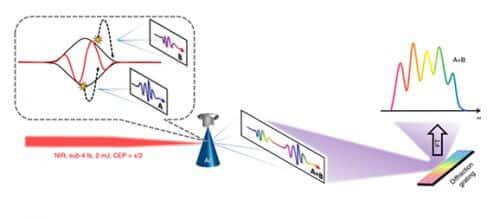The problem of measuring ultra-fast flashes has accompanied the science of autoseconds since its early days: it is possible to measure the wavelengths that make up the flash (the colors), but the phase of each color cannot be measured directly. This problem is called the "phase recovery problem"

The laser flashes in the laboratory of Prof. Nirit Dudovitz are among the fastest ever created - too fast to accurately determine the length or shape of each flash lasting attoseconds (billionths of a billionth of a second). The problem of measuring ultra-fast flashes has accompanied the science of autoseconds since its early days: it is possible to measure the wavelengths that make up the flash (the colors), but the phase of each color cannot be measured directly. This problem is called the "phase recovery problem". To deal with the problem, Prof. Dudovitz from the Department of Physics of Complex Systems at the Weizmann Institute of Science joined her department colleague Prof. Dan Oron and Prof. Boaz Nadler from the Department of Computer Science and Applied Mathematics.
"Professor Nadler is my neighbor. When we were once walking around the neighborhood with the kids, I asked him a question. So far, the question has already led to five articles that we wrote jointly with Professor Oron," says Prof. Dudovitz. In the current study, where an innovative algorithm is applied to a long-standing problem in experimental physics, the collaboration with Prof. Nadler was a natural choice.

There are several methods to circumvent the phase recovery problem, but in practice, they are very challenging to implement. Dr. Oren Raz, who was previously a research student in Prof. Dudowitz's group, came up with an idea for a new way: to combine two ultra-fast laser flashes and measure them together, so that the combination between the two would act as a hologram. In physics, holography is used to analyze three-dimensional images of objects in space. In the current study, the scientists applied the idea to demonstrate a four-dimensional temporal hologram. Recording the hologram, combined with knowing the interference pattern of each of the two flashes, allowed the researchers to reconstruct the phases of the two light waves. "This is an idea that can, theoretically, be applied for the purpose of measuring various quantum phenomena - for example, reconstructing the shape of atomic particles from the interference in their diffraction patterns," says Prof. Dudovitz.
Dr. Raz, who recently returned to the Institute to head a research group, published his theoretical research while still a student. The transition from the theoretical prediction to an experimental demonstration was a challenging step, which required several years of collaboration between scientists from different fields. In addition to the collaboration with Prof. Nadler, Dr. Oren Fedhzor from Prof. Dudovitz's group and Dr. Ben Leshem from Prof. Oron's group, the researchers also worked with a group of Italian scientists at the ultrafast lasers facility at the Polytechnic University of Milan. The results, says Prof. Dudowitz, were amazing: "We were able to measure the shape of the flashes with an atto-second precision using a simple direct spectral measurement. This fact may change some existing concepts in the field: we showed that it is possible to measure something very fast with a much slower detector - slower by a full second or even more."
More of the topic in Hayadan:

One response
fun to read Interesting studies.